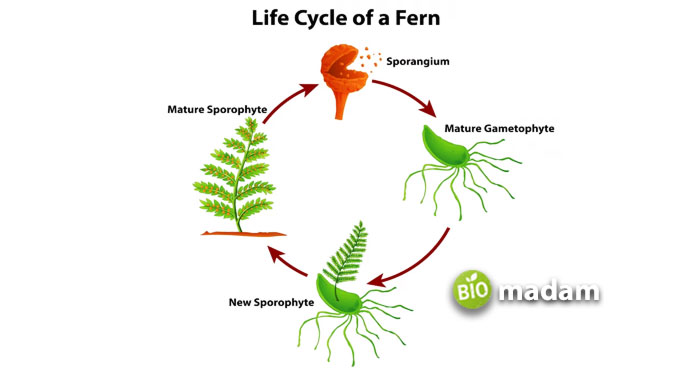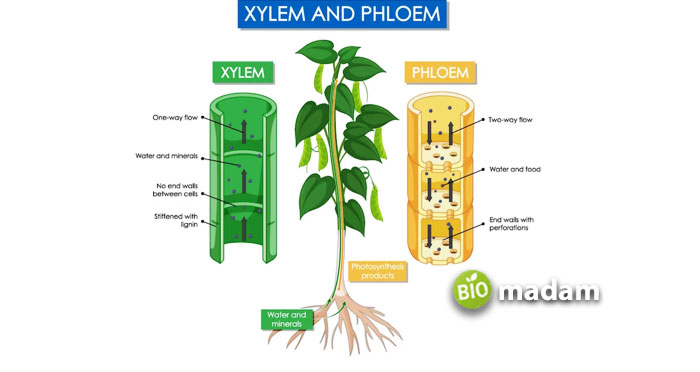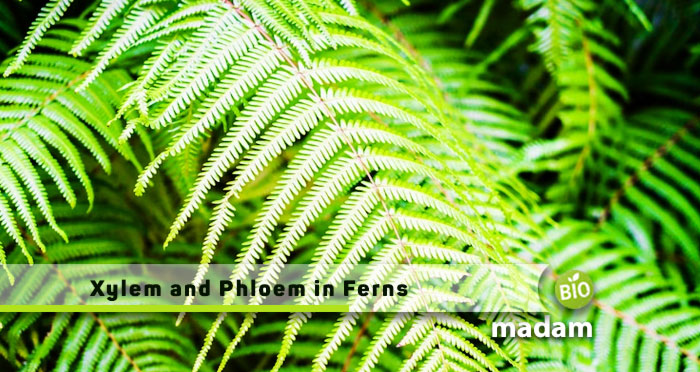Plant study or botany has a wide variety that it is almost impossible to learn everything about all plants ever existed. Kingdom Plantae has a total of five divisions, including Thallophyta, Bryophyta, Pteridophyta, Gymnosperms, and Angiosperms. Pteridophytes are vascular plants and usually consist of leaves, roots, and stems. Today, we are going to talk about a plant, a fern belonging to the Pteridophyta division.
More than 20,000 fern species and their subspecies have been grown and cultivated in the world. Ferns are a unique type of plant that reproduces through spores. They can be grown outdoors as well as indoors. Ferns lack flowers but possess stems, leaves, and roots. The one common question arising is ”do ferns have vascular tissue?” We have got the answer to this and much more about ferns and vascular tissues. So, let’s get to it.
Characteristics of Ferns

Here are some notable characteristics of ferns.
- Ferns are found in temperate areas with sub-humid tropics. Some ferns survive in sub-arctic conditions as well.
- The body of ferns is sporophyte, with stems, leaves, and roots. Sometimes stems are above ground but most of the time stems are underground. The roots are adventitious.
- Leaves are large and are known as fronds. Leaves are either simple or pinnately compound. They are either uni-pinnate, bi-pinnate, or tri-pinnate.
- There are leaves or scales called ‘’ramenta’’ on mature leaves. It prevents the ferns from desiccation.
- Ferns lack flowers and reproduce sexually by spores and vegetatively by fragmentation of rhizomes.
Do Ferns Have Vascular Tissue?
As already mentioned, ferns are seedless vascular plants, indicating that they do possess vascular tissues. There are two types of vascular tissues responsible for carrying substances throughout the plant body. Ferns grow up above the ground owing to the presence of these vascular tissues. These tissues provide the essential nutrients to the ferns.
Which Type of Vascular Tissues Are Found in Ferns?
The two vascular tissues found in ferns are the xylem and phloem. They help in the growth and development of the ferns. Xylem provides the ferns with water and nutrients whereas phloem provides them with the essential organic matter needed for their growth.
What are Vascular Tissues?

Vascular tissues are a type of conducting tissue found in vascular plants. The xylem and phloem are the main types of vascular tissues found in most plants. There are two meristems present in the vascular tissues. These meristems are vascular cambium and cork cambium. The tissues are long and slender. Both of these vascular tissues play a role in transporting water, nutrients, and sugars to all plant parts.
What is the Function of Vascular Tissues?
The main function of vascular tissues is to provide the plant with nutrients and minerals. Xylem tissue is responsible for transporting water and nutrients from the roots to the upper parts of the plant body. It also provides structural support to the stem of the plant. It prevents the plant from bending by giving it strength.
Phloem is responsible for transporting organic compounds and carbohydrates from the site of photosynthesis to other parts of the plant. The main type of cells found in the phloem are parenchyma cells. These cells can store water, carbohydrates, and other organic matter for the plant.
Conclusion
Ferns belong to the Pteridophyta division of the kingdom Plantae. Ferns are seedless and flowerless vascular plants. They are found in temperate regions and possess stems, leaves, and roots. Ferns have vascular tissues in them responsible for providing nutrients and minerals to the whole plant. There are two types of vascular tissues in ferns, the xylem, and phloem. Xylem carries the water and nutrients from the soil to the plant. The phloem carries carbohydrates and organic substances throughout the plant.

Hello, I would like to introduce myself to you! I am Chelsea Rogers, an experienced blog writer for science articles, holding an MPhil degree. My enthusiasm to grab the best knowledge, let it relate to botany, zoology, or any other science branch. Read my articles & let me wait for your words s in the comment section.

